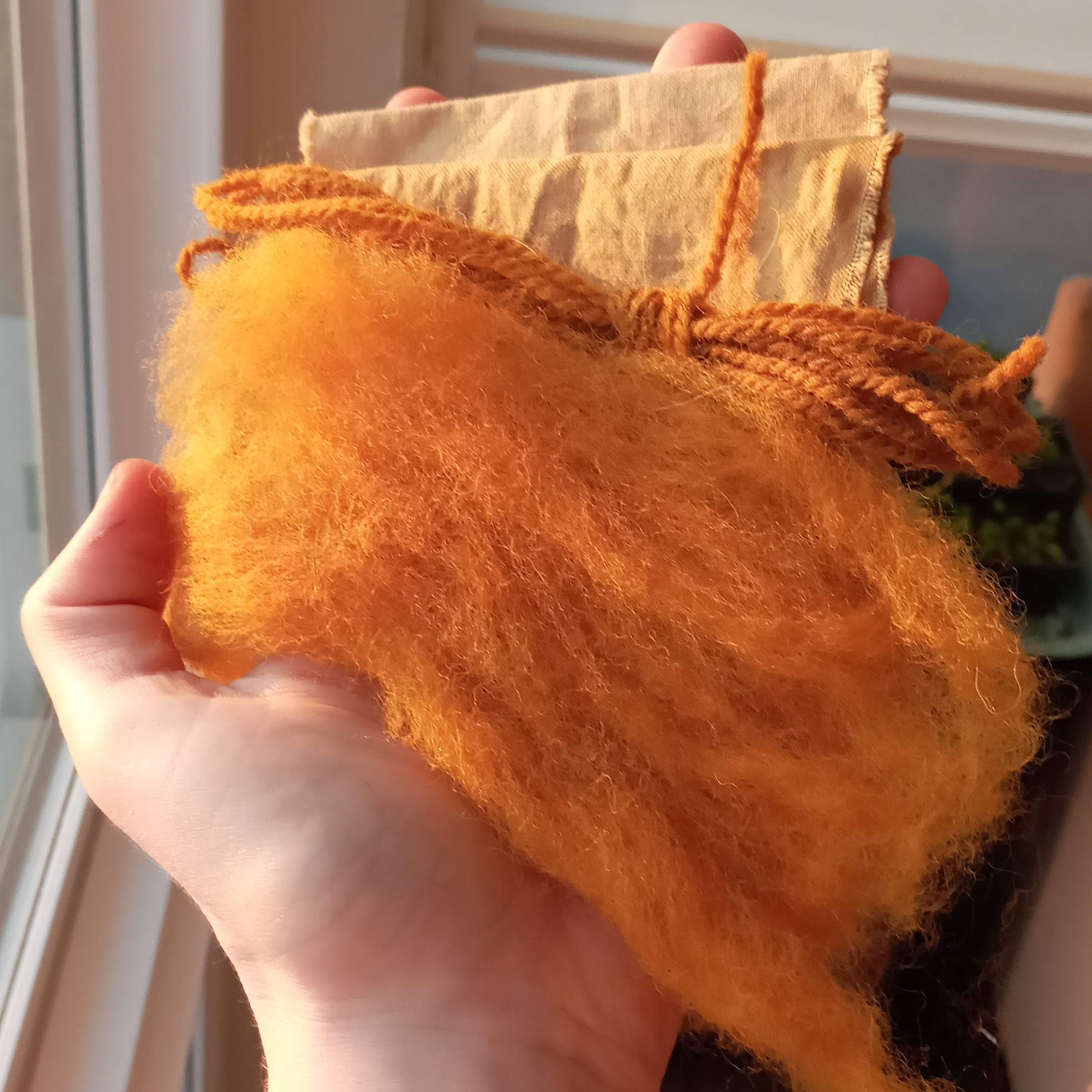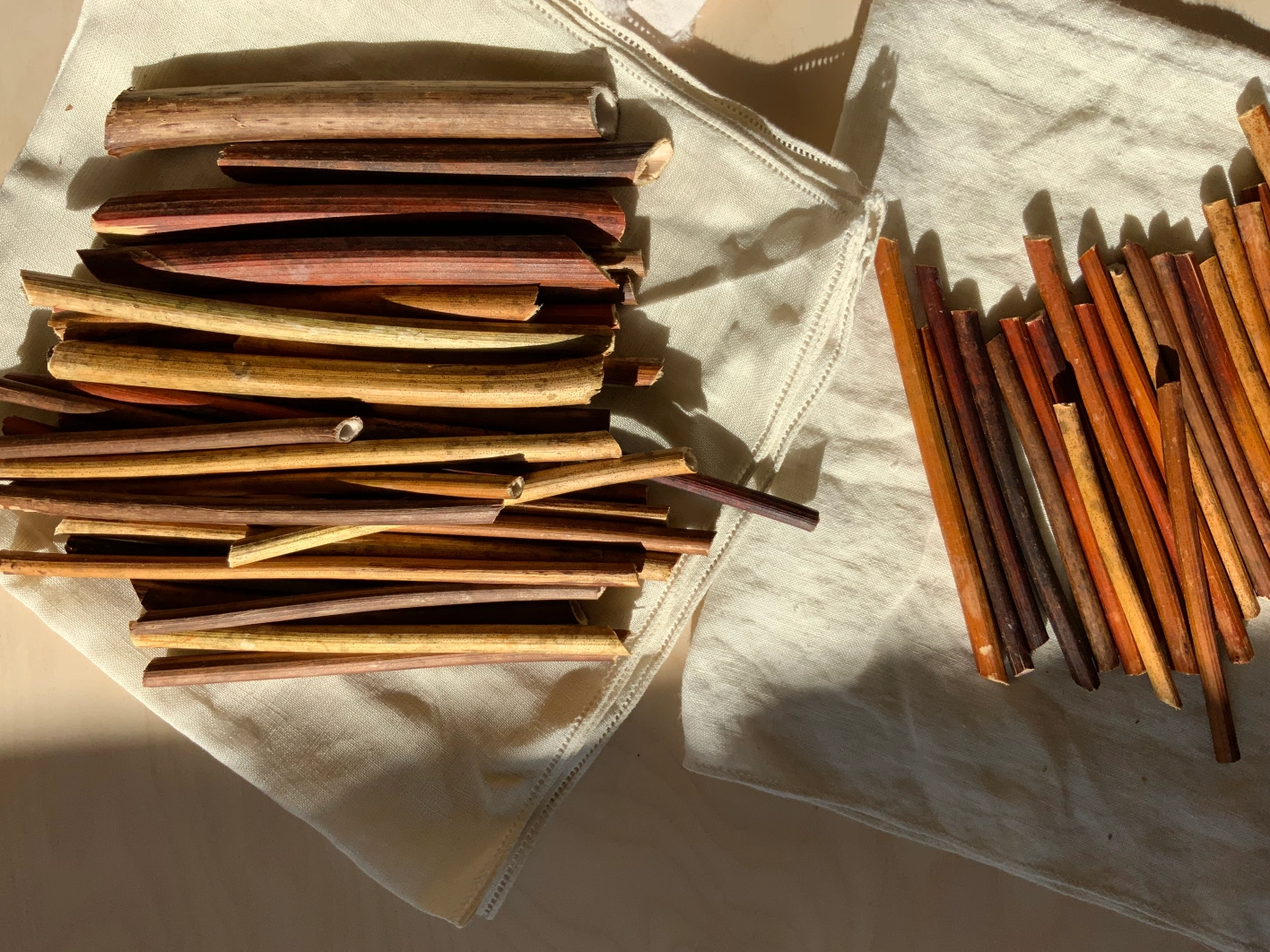Japanese Knotweed
Reynoutria japonica
Food
Young shoots in the spring are edible. They have a sour taste, largely from oxalic acid. They are used in both savory and sweet preparation. Savory preparations oftem include pickling or frying in oil. Sweet preparations often use knotweed in place of rhubarb.
The shoots are best when young, often in April and March. Once the canes get too old they become too fibrous. To quote the wonderful Alexis Nicole "as long as they pop when you break them, they are tender enough". You can watch her feed them to invasive rabbits and pickle them here.
Caution: Knotweed is often agressively controlled using herbicides that aren't safe to ingest. Be sure you know the area and any history of herbicide application before eating. Keep an eye out for any bright spray paint tags or bits of ribbon that warn about herbicide application.
Natural Dye

The roots of knotweed plant make a strong orange dye. The leaves can produce a transient pink dye when mixed with washing soda.
Medicinal
Knotweed roots have been used by herbalists and as part of Traditional Chinese Medicine to treat lyme disease, respiratory issues and gingivitis. Knotweed is rich in reservatol along with other active compounds.
Alyssa Dennis of the Invasive Apothecary has been working to make medicines out of invasive plants. Her work includes Japanese Knotweed which you can listen to her talk about in this presentation or read more about her work on her website.
Paper
Knotweed canes can be used to make paper. The fibres aren't very fibrous on their own so they are often mixed with recycled paper to strengthen it.

Krater Collective and Trajna run a commerical project producing paper out of knotweed and recycled paper. You can learn more about it here.
Along with Trajna, Rok Oblok has made nursery pots out to knotweed pulp.
Bat Flower Press makes hand made paper out of waste products and knotweed. They've detailed their process here.
Meg Heeres has also worked with knotweed for paper making and hosted community workshops on it.
Fertilizer
Japanese knotweed canes have been turned in to fertilizer rich in nitrogen. Bokashi fermentation was used and the process detailed in this paper along with in this online talk.
If the knotweed has been treated with herbicide, it is not suited to be used as fertilizer. Get to know the plants you work with and the history of the site.
Drinking straws

Rachel Alexandrou uses knotweed stems as drinking straws.